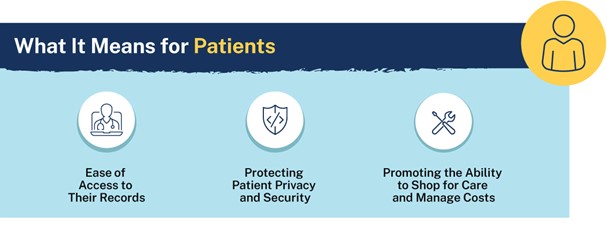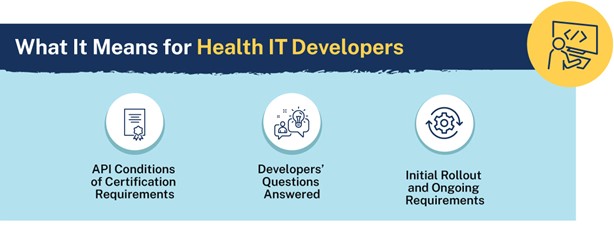For more information on your charming neighborhood CSW Solutions, visit us at our home or subscribe to our newsletter! We also do that social networking thing at: Twitter, Facebook, Linkedin, and Instagram! Check out our #funfactfridays
New Examples of Technology in Healthcare
This month, we have been focused on healthcare in the cloud with Microsoft's new offerings in their industry-specific, Microsoft Cloud for Healthcare. In the years leading up to the pandemic, there had already been a push to bring record keeping and outdated on-premise systems to a more manageable state for many healthcare facilities. You may have read about the growth in ransomeware attacks too, which resulted in the realization that many organizations in the industry were in dire need of upgrades, preventive security measures, and digital transformation. But when there are strict levels protocol and matters of compliance to adhere to, along with these longstanding traditions of in-office care, it was even harder to think of committing to seemingly drastic changes like digital transformation.
The pandemic changed all of our lives. It also accelerated the need for different levels of access to services and technological advancement in healthcare. HIPAA-compliant sharing of patient data and information with secure and real-time access across medical providers really will be one of the most important advancements in this decade.
4 Healthcare Technology Examples
So, this post is going to be focused on the many new areas for the healthcare industry, most notably in the security of cloud.
1. Telehealth
Affordability, convenience, and access through technology. This was a very important advancement for both patients, doctors, and healthcare staff everywhere. Not only did it mean safe and secure consultations but that anyone could finally see a doctor any time and any where care is needed. Telehealth broke the mold. It meant that seeing a doctor or a specialist no longer meant showing up at your appointment time, only to wait another hour before a nurse saw you and then waiting even longer before your service is complete with a five minute peptalk from your doctor. It also means that remote patient monitoring and wearables have become more readily available. These technologies also mean that there is a future for affordable long-term care and managing bed space when staffing is stretched and provider support is needed. Telehealth has grown exponentially in the last few years in both innovation and adoption, leading us into the next realm of healthcare technology, electronic health records (EHR) and data.

2. Electronic Health Records
This is an advancement that began over a decade ago, in an effort to expedite the access to patient care by providing clinicians with a more holistic view of a patient's history and make better decisions within a stronger network of services. 2009’s Health Information Technology for Economic and Clinical Health (HITECH) Act helped encourage healthcare facilities to streamline their patient record systems by adopting the use of EHRs.
EHRs not only improve quality of care but the proof of care to support efficiency in billing and forms that are all essential to the industry. The isolation of patient data and information can lead to the accrual of massively unnecessary healthcare costs. This has been mainly due to inessential or redundant medical labs and workups being done because providers just didn't have access to a patient’s full medical history. Incident reports can be assessed and dealt with more easily without losing any time to human error or distraction as each issue can be tracked and timed.
We also wrote about the Microsoft Teams EHR connector that aids in clinician consultation and virtual patient appointments. This connector even allows for cross-provider consultation and enables secure collaboration through chat, video, voice, and all the healthcare tools in a single hub! At this time, the connector requires an active subscription to Microsoft Cloud for Healthcare and Epic version November 2018 or later. There are pre-integration steps with all the pre-requisites that you can find in the Epic-Microsoft Teams Telehealth Integration Guide.
This leads us into another aspect of healthcare software development.
3. Data Access
A few years ago, the 21st Century Cures Act was passed and new rules were issued by the US Department of Health and Human Services (HHS) that gave patients unprecedented, safe, and secure access to their health data. This also means that developers can create certified API technology. More on that here.


This was an important step in advancing the technology to enhance data sharing and improve health systems for everyone. Especially at a time when withholding any amount of data could be dangerous for patients. This also means that healthcare personalization can be more precise through analyzing a person's data and presenting care, coaching, and health recommendations that will directly address their specific health or bodily conditions, goals, and lifestyle. It could also improve bedside manner, well maybe! We'll have to keep our fingers crossed on that last one.
4. Artificial Intelligence
We talk about AI all the time when technology is involved because it is an ever evolving space in the frontier. It is usually the most exciting to consider when it comes to healthcare technology because it could mean improved enhancements to equip medical personnel with new tools to advance treatment with more accuracy and speed. Not only has AI proved useful in improving patient care with efficiency through its integration with Telehealth, but is continues to be incorporated in other areas of the industry as an assistant to clinicians and providers alike.
Machine learning has experienced faster growth than any other part of AI. It lets a computer learn new information and refine its capabilities in response to what it has learned without any directions or code telling them what to do. In healthcare, many organizations approach AI through incorporation of semantic data lakes, or collections of data in a wide variety of formats where insight can be derived by bringing unrelated data together and applying unique, standardized identifiers to each. This approach is an upgrade from relational databases which have more exact structural requirements, resulting in isolated data silos.
Of course, all new applications require HIPAA compliant databases but this new capability is created through the incorporation of natural language processing (NLP) within data lakes. We wrote about NLPs in a previous post where we highlighted Microsoft's new Text Analytics for health. It's an exciting new solution that is part of Microsoft Cloud for Healthcare and it means they are the first cloud provider to allow customers to formalize their NLP output as bundles of interconnected hierarchical FHIR resources. Text Analytics for health is just one of many offerings from Microsoft that represent this new direction in AI and machine learning for healthcare.
* * *
While our healthcare system has come a long way thanks to the many benefits enabled by technology, it's clear that this is just the beginning. These new developments will forever change our experiences with our health and providers. By continuing to adopt innovative technology with a mobile or hybrid workforce, more services can be offered without the added cost of specialized staff or operational mobility at more reasonable costs for everyone. From streamlining patient care and cutting staff burnout to developing groundbreaking medical capabilities with breakthrough treatment opportunities, the digital transformation of the healthcare industry is now a world of possibilities. If we have learned anything in the last few years, it is that everyone needs affordable and high-quality care no matter what their circumstances.
If you are interested in learning more about Microsoft Cloud services for Healthcare, you can reach out to your friends at CSW Solutions any time with your industry projects or any concerns. We are always happy to help!
Schedule a free consultation
As a Gold-certified Microsoft Partner, you can trust us with your business services. You can start by getting in touch to organize a free consultation to see how we can exceed your software and web service needs!


